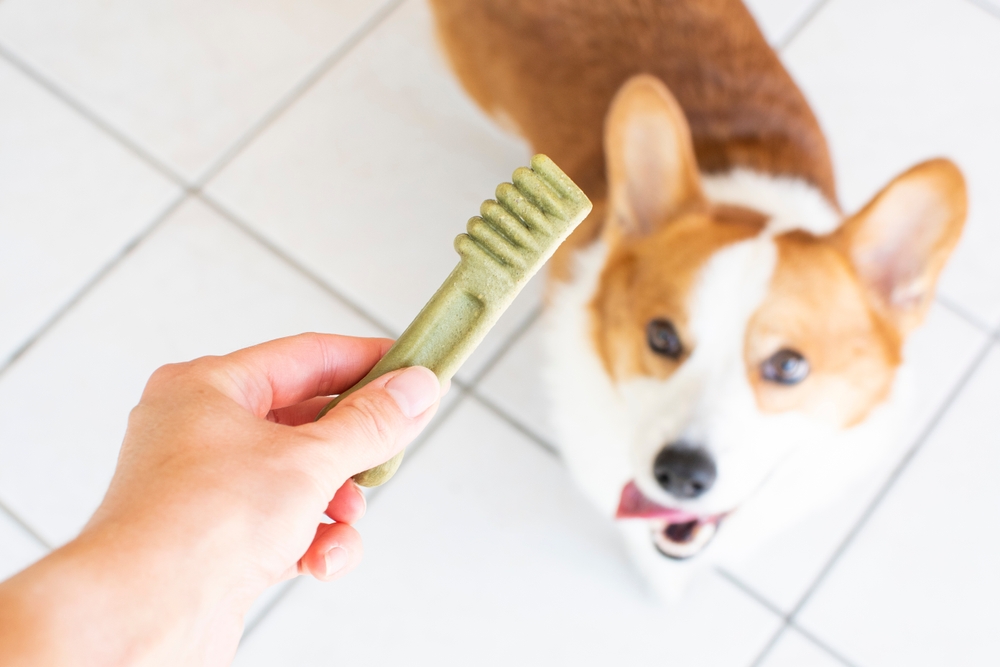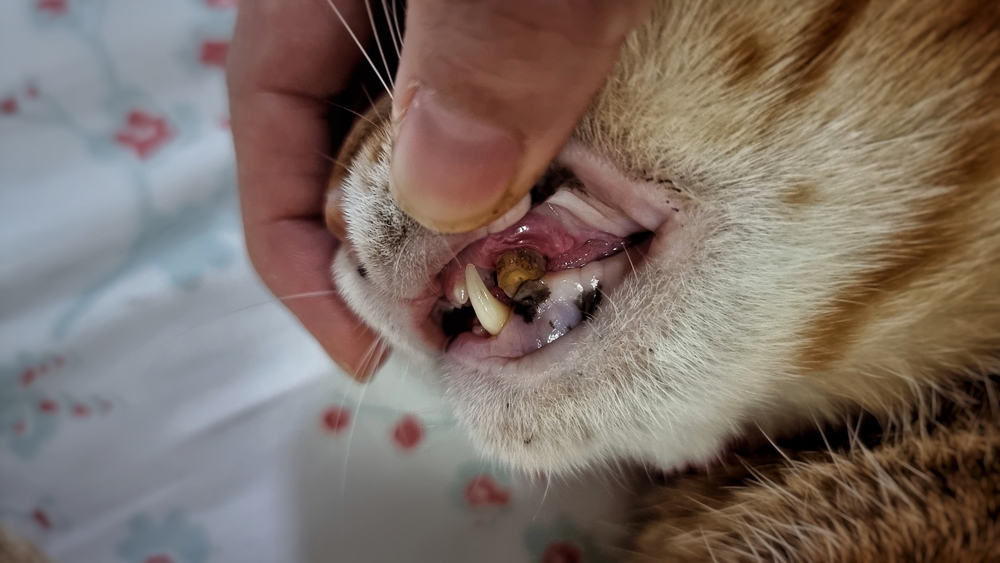Periodontal disease is preventable if caught early, but unfortunately, dental wellness in pets is too often overlooked. Unlike people, pets cannot brush their own teeth and make good choices about their dental care, but like us, they need regular dental care for their oral and overall health.
In our previous post this month, we focused on pet dental care. Here, our Caring Hands Animal Hospital team provides an overview of periodontal disease in pets and its prevention.
What is periodontal disease in pets?
Periodontal disease (i.e., gum inflammation) is one of the most frequently diagnosed diseases in cats and dogs, with development in an estimated 80% to 90% of dogs by 3 years of age. Periodontitis is the result of plaque buildup on the surface of the teeth. This plaque, which is formed by bacteria from food and debris left in the mouth, will harden into calculus (i.e., tartar) without early intervention with at-home toothbrushing and professional cleaning.
As periodontal disease progresses, teeth can be lost and the supportive structures of the teeth damaged. Advanced periodontitis, when the bacteria reach the bloodstream, can lead to systemic diseases that harm the heart, liver, and kidneys. You can understand why periodontal disease in pets is a serious problem that can shorten their life.
Periodontal disease signs in dogs and cats
Frequently, periodontal disease remains hidden, and pet owners only recognize that dental issues exist when their pets’ breath becomes smelly, which they often consider normal. Some indicators of periodontitis in its various stages include:
- Halitosis (i.e., bad breath)
- Bleeding gums
- Gum inflammation or redness
- Loose or mobile teeth
- Discoloration of the teeth (i.e., tan or grey spots on the surface)
- Inability to chew hard food
- Pawing at the mouth
When these signs are present, contact us for a dental examination for your pet. The sooner we can address and diagnose the problem, the faster we can get to work on treatment.
Periodontal disease diagnosis for pets
To accurately diagnose your pet, they must be anesthetized after the initial physical exam, because we need X-rays to show exactly what’s occurring above and below the gum line, such as bone loss and deterioration of the structures surrounding the teeth. We can also professionally clean the teeth, including scaling and polishing to eliminate plaque and tartar on your pet’s teeth, while they are under anesthesia.
We will also know from the X-rays the stage of periodontitis in your pet. The disease is graded from Stage 1 to Stage 4, with Stage 1 being mild gingivitis (i.e., inflammation) and Stage 4 being advanced or severe periodontal disease with pain and tooth loss. Treatment will vary depending on the periodontitis stage
Preventing periodontal disease in pets

Your veterinarian can guide you in steps to prohibit dental disease from starting or advancing. Most pets require at-home toothbrushing and yearly or twice yearly professional dental cleaning.
The following steps can help prevent or slow down periodontal disease:
- Regular checkups — Adhere to your pet’s annual or twice a year veterinary dental examinations. This is key to identifying any changes in your dog or cat’s oral health.
- At-home toothbrushing — Brush your pet’s teeth daily, or at least every other day, for the best results. As in people, toothbrushing prevents plaque and tartar buildup on the surface of the teeth. If you would like help with brushing your pet’s teeth, our team will be happy to demonstrate.
- Dental diets — Choose a diet that is designed to naturally brush the teeth, such as a hard kibble diet, while the pet chews. Other specialty diets designed to prohibit plaque development are also available. Ask your veterinarian for recommendations.
- Extras — Lastly, water additives and treats can help keep your pet’s pearly whites clean. Look for the Veterinary Oral Health Council (VOHC) seal of approval before you buy, because these products have been vetted and proven efficient. The VOHC is a governing body of board-certified veterinary professionals whose approval helps consumers choose the correct dental food, treats, and other products.
Getting to the tooth of the matter
Pet dental health is paramount to keeping your pet in optimal health. If you have been neglecting those important toothbrushing sessions with your furry friend or forgoing their annual exams, February, which is National Pet Dental Health Month, is the perfect time to start or restart. And remember—pet oral care is a year-round necessity.
Prevention is the key to dental health and long standing overall health. Our Caring Hands Animal Hospital team suggests you schedule an appointment for your pet, so we can ensure their teeth are in great shape or start the appropriate treatment.



Leave A Comment